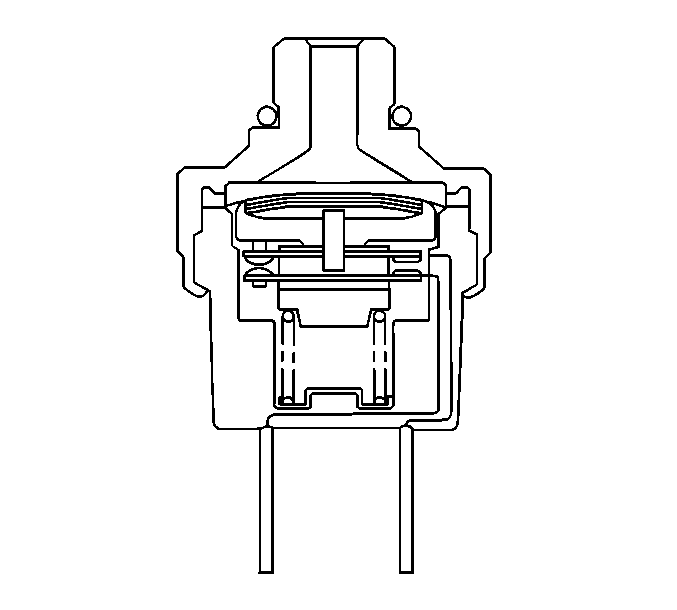A/C Refrigerant Pressure Sensor

The A/C refrigerant pressure sensor is located next to the condenser fan motor in the liquid pipe, between the receiver/ dryer and the evaporator. The A/C refrigerant pressure sensor cycles the compressor on and off under conditions of abnormally low or abnormally high refrigerant pressure.
If the pressure drops below 196 kPa (28 psi) or rises above 3140 kPa (455 psi), the A/C refrigerant pressure switch contacts (2) open and signals the A/C compressor control module to shut down the compressor.
Abnormally low refrigerant pressure may be caused by the following conditions:
| • | An insufficient refrigerant supply |
| • | Very low refrigerant temperatures |
Abnormally high refrigerant pressure may be caused by the following conditions:
| • | Extremely high refrigerant temperatures |
| • | An overcharging of the system during vehicle service |
A/C Compressor Clutch Relay
The A/C compressor control module energizes the A/C compressor clutch relay, causing the A/C compressor clutch relay to apply voltage to the compressor clutch. The A/C compressor control module is capable of controlling the air conditioning system operation by means of energizing and de-energizing the clutch relay.
A/C Condenser Fan Relay
The condenser fan receives voltage from and is activated by the A/C condenser fan relay. The ground for the A/C condenser fan relay is controlled by the powertrain control module (PCM). If the A/C compressor is engaged, the condenser fan runs continuously. The powertrain control module (PCM) grounds the A/C condenser fan relay coil under any of the following conditions:
| • | The A/C system is operating. |
| • | The engine coolant temperature (ECT) is 110°C (230°F) or higher. |
| • | The PCM detects an engine coolant temperature (ECT) sensor malfunction. |
A/C Switch
The A/C switch is mounted on the heater control unit. The A/C switch signals the A/C compressor control module that A/C system operation has been requested.
Evaporator Temperature Sensor
The evaporator temperature sensor is a thermistor, which is a device that translates temperature into an electrical resistance. Thermistors are connected into electrical circuits in order to determine temperature in critical areas. A thermistor is used in engine control systems, such as engine coolant temperature (ECT) and intake air temperature (IAT) sensors. A thermistor is used in the A/C system in order to determine temperatures at the evaporator core. If the evaporator core temperatures drop to approximately 0°C (32°F), frost and ice will start to form on the evaporator fins. Ice formation on the evaporator fins will impede airflow through the evaporator and reduce the system's cooling ability.
In order to prevent ice formation on the evaporator fins, the A/C system incorporates a thermistor, that is electrically connected to the A/C compressor control module. When the evaporator temperature drops to 0°C (32°F), the A/C compressor control module reads the corresponding thermistor resistance as a system cutout signal. When the signal is received, the A/C compressor control module shuts down the compressor until the evaporator core temperatures increase to 3°C (37°F).
